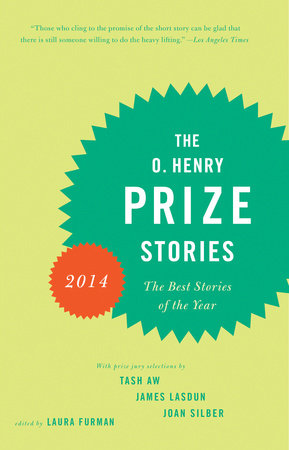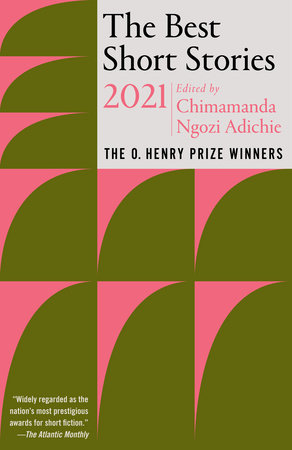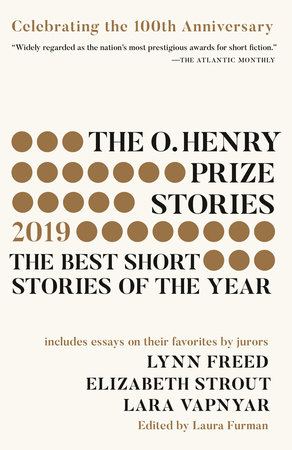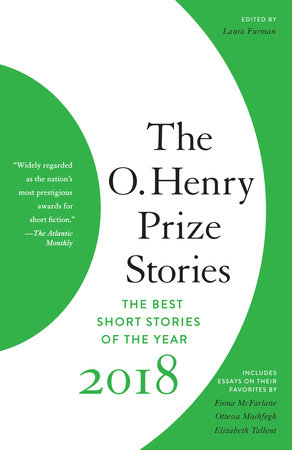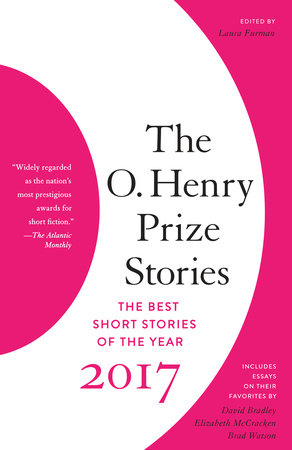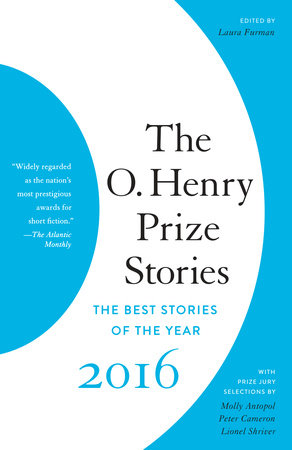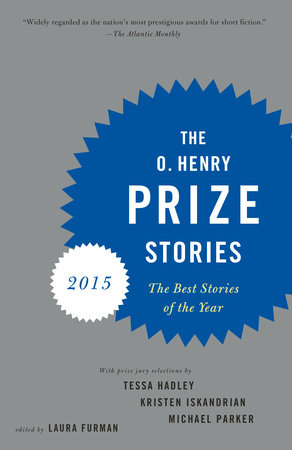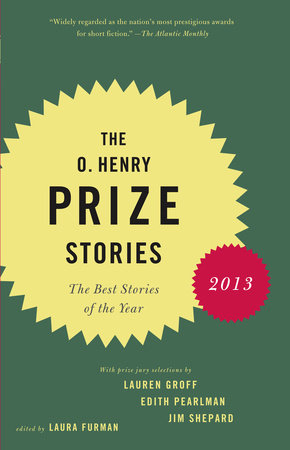Excerpt
The O. Henry Prize Stories 2014
Excerpted from the Introduction
The mission since 1919 of
The O. Henry Prize Stories has been to encourage the art of the short story. By calling attention to their gifts, we encourage short-story writers. When we put a story between book covers, we give it a longer life and a wider readership.
Because each story’s crucial first publication was in a magazine (print or online), we list the magazines that have submitted their short fiction in the back of each collection (pp. 358–77). We hope that with the information provided, new readers will find and enjoy the magazines and perhaps subscribe to one or two. These days, a reader also has the opportunity to be a patron of the arts and donate to a magazine, which helps keep the little magazines alive.
Some of the listed magazines are not struggling.
The New Yorker publishes fiction weekly and has a sterling history of cultivating and supporting writers over the long haul, as does
Harper’s. But some fit the classic notion of a little magazine: circulation well under one thousand, inventive design, eccentric and centrist fiction published side by side.
Noon, for example, is an annual always filled with challenging fiction and always a pleasure to see and hold.
Some excellent magazines—
Granta,
Tin House,
Narrative, and
The American Reader, founded in September 2012—are brought into being by the vision and ambition of private benefactors.
Tin House is a rare literary magazine that’s a commercial success. American nonprofit magazines with 501(c)(3) status such as
A Public Space are eligible for support from the National Endowment for the Arts, a perennial pincushion when it comes to federal funding.
The Threepenny Review publishes consistently readable and challenging essays, poetry, and fiction with the support of “subscriber-donors,” whose subscriptions make up about 35 percent of the annual budget, along with their donations (40 percent), according to editor Wendy Lesser. The rest of the broadsheet’s funding comes from grants, advertising, single-copy sales, and digital sales.
Narrative (and NarrativeMagazine.com) is the product of its two editors, Carol Edgarian and Tom Jenks, who supported it themselves at first and gradually built a board, an advisory council, and a base of donors.
Many magazines are funded by public and private academic institutions. Shrinking state budgets may put a magazine in mortal danger, as those in charge question whether a small magazine is the best use of public funding. Does it aid the institution as, say, a winning football team does? Measuring the value of art, not to mention the value of prestige, is a trickier score to keep than that of the Cotton Bowl. Still, some institutions, private and public, continue year after year to support the magazines that give established and new writers a chance. In recent years,
Ecotone has emerged as a solidly interesting magazine. The Publishing Laboratory of the creative writing department at the University of North Carolina Wilmington founded the magazine in 2005 and also supports its small press, Lookout Books.
New England Review was founded in 1978 at Middlebury College, a small liberal-arts school in Vermont.
New Orleans Review (1968) is sponsored by the English Department of Loyola University, New Orleans, and
Subtropics by the University of Florida. Since 1915,
Southwest Review has been Southern Methodist University’s pride. The exquisite Southern Review is supported by Louisiana State University.
Many little magazines seek help from donors, joining schools, hospitals, scientific research institutions, museums, and a myriad of organizations that do not make a profit but add immeasurably to our lives. Your subscriptions to such magazines help keep them alive. The editors and staff of little magazines don’t enjoy big salaries. Some have no salaries at all. They work with such devotion because the idea of publishing new literary work is a powerful motivation, profit or no profit. The real success of a magazine lies in the quality of the work chosen and published.
This year’s jurors are Tash Aw, James Lasdun, and Joan Silber, all previous O. Henry winners. Each read a blind manuscript and chose a favorite without consultation with one another or me. In the “Reading
The O. Henry Prize Stories 2014” section (pp. 333–38), you’ll find their essays.
Years ago, my family drove to Colorado for a break from the Central Texas summer. We’d brought way too much stuff, and our rented Aztek was weighed down by the extra container on its roof. On the way, I got gasoline on my favorite white shirt and parted with it. Along Highway 90, still in Texas, we slept in a dank cement-block motel with mold-filled air-conditioning. But when we reached the rented house in Gunnison, where we could finally stop traveling, instead of flinging open the car doors and escaping, we stayed in the Aztek so we could keep listening to the audio recording of Mark Haddon’s novel
The Curious Incident of the Dog in the Night-Time. Haddon’s story in this collection, “The Gun,” was chosen by juror Tash Aw as his favorite. One quality the story shares with the novel is Haddon’s ability to involve the reader in the improbable, sometimes confounding events of his characters’ lives.
The relationship between the two boys whose adventure forms the bulk of the action isn’t profound. They are together and then they part, for many reasons and with some feeling, all unstated. Their nonchalant friendship leaves both boys unprepared for the arbitrary violence and emotion to come. “The Gun” is a story made up of curious incidents that, when put together with Haddon’s skill, bring the characters so close that the action of the story seems to have happened to us.
The primary relationship in “Pétur” by Olivia Clare is between mother and son, in Iceland to celebrate the mother’s birthday. They, and the reader, are in a realm of “unworldly weather.” The story streams past unfamiliar words such as
fjalls and
hrossagaukur, and a weather report—“ash from Eyjafjallajökull”—before we’re sure exactly who and where the characters are. Our ignorance is dispensed with abruptly:
Adam was a data systems analyst. He was thirty-six. He lived in a one-bedroom apartment in Palo Alto, where Laura was, in a house she’d once shared with Adam’s father on the other side of town. Iceland for two weeks had been her idea for her birthday. She’d just turned sixty-one, and she’d told Adam she didn’t believe it, and he shouldn’t, either. She’d said, You look in the mirror and acknowledge you’re as old as you like. She felt nineteen, mostly. She looked fifty.
Mother and son, on vacation in a land of ash and icebabies, are introduced with quite a few numbers (thirty-six, one, two, sixty-one, nineteen, fifty). We’ve been given what looks like information, though the numbers urge us to pause, add, and subtract before we go on. This odd timing is a risk for the author. Short-story beginnings are crucial, and often writers take great trouble to be as clear and simple as possible to usher the reader into the story. Clare does the opposite, giving her reader firm ground to stand on and then taking it away. The passage of the mother’s birthday and the spooky volcanic ash falling everywhere seem like part of the same unpredictable event. The reader is then immersed in what is most important in “Pétur”: the characters’ knowledge and ignorance of each other; the transformation of a woman from a mildly negligent mother into a woman either unhinged or unloosed in her own new reality. The reader watches the son as he watches his mother drift further from him than ever before.
The sisters in “Opa-locka” by Laura van den Berg are linked, like survivors of the same plane crash. (Joan Silber chose “Opa-locka” as her favorite, p. 337–38.) The sisters’ closeness is their bedrock. As the story opens, they’re working as private detectives, observing the movements of a possibly adulterous husband from a rooftop. They also search, perennially, for their father, who’s a disappointment whether absent or present. The slow revelation of their past and future winds through “Opa-locka” while the reader waits for the solution to the story’s mystery. Surely, the deep sadness that haunts the story isn’t for their client, her wandering husband, or even for Mozart’s Don Giovanni, who makes a surprise appearance in Van den Berg’s story.
In “Nemecia” by Kirstin Valdez Quade, the narrator, Maria, tells us that her cousin Nemecia lived with her family because her own mother, Maria’s aunt Benigna, “couldn’t care for her. Later, when Aunt Benigna recovered . . . , Nemecia had already lived with us for so long that she stayed. This was not unusual in our New Mexico town in those years between the wars; if someone died, or came upon hard times, or simply had too many children, there were always aunts or sisters or grandmothers with room for an extra child.”
Yet it isn’t Nemecia who grows up as an “extra child,” but Maria. The ravenous and dramatic Nemecia is the child indulged and favored by the adults. She terrifies Maria and tortures her in a variety of ways, yet when Nemecia turns sixteen and has bigger fish to fry than her little cousin, Maria finds that “instead of relief, [she feels] emptiness.” For Maria, Nemecia is glamorous and tragic; Maria’s envy of her cousin begins to poison her life. A family secret, distorted by Nemecia, is the basis of Maria’s lifetime imprisonment in the family. Nemecia moves to California, renames herself “Norma,” and lives with her mother, brother, and stepfather in a house where Spanish is never spoken. Nemecia/Norma is free to reinvent herself, while Maria is cursed by her search for the truth and by her envious need for her nemesis.
Another pair of girls, Uzoamaka, the narrator, and Eno, the daughter of a family servant, are at the center of Chinelo Okparanta’s “Fairness.” Both Eno and her mother have fair skin, while Uzoamaka and her school friends have skin “the color not of ripe pawpaw peels, but of its seeds.” She declares, “We are thirsty for fairness.” A school friend has lightened her skin with a special product, using household bleach instead of the cosmetics—Esoterica, Movate, Skin Success, Ambi—Uzoamaka’s mother brings home from her trips overseas in pursuit of fairness for herself and her daughter.
But there is bleach and there is bleach, and fairness can mean justice rather than skin color. The disaster that follows is about far more than color. The problematic reality of Uzoamaka’s dark skin is another hurdle to clear for her ambitious mother, who plans to send her to America and advises powder to “brighten” her up, while the lightness of the housegirl Ekaite’s skin doesn’t give her the power to defend herself against Uzoamaka.
Kristen Iskandrian’s “The Inheritors” is an alluring story, told by a narrator whose mother has died and father absconded to a condo in Florida; she’s adrift for the moment. “I like being sad,” she tells us in a long passage detailing what annoyed her about her fellow employee at Second Chances, a consignment store.
I like being sad, which mystified her; I like it until I reach the nadir where sadness changes, as if chemically, to repulsion and self-loathing, making me wish that I was “capable” of “handling” things instead of turning away from them in disgust until my disgust disgusts me, and my anger at my inadequacy as a human being angers me, and all of that pure, easy, delectable sorrow gets squandered. She refused, cheerfully, to understand this, and it wasn’t her refusal that was maddening but her cheer.
Their friendship develops, and the narrator’s illusion of mutual understanding grows. It’s a time when she’s neither here nor there, and she’s lonely. Her friend from work is someone who’ll be there without her having to make arrangements for company, and someone about whom she’s curious. The coincidence of their jobs makes their friendship prematurely comfortable.
The silent partner in their troika is the consignment shop itself—a museum of the unwanted and the relinquished—and the hidden dramas performed there each day. Each woman has strong feelings about her personal possessions. For the narrator, the most important exist in her memory. Their weight on her is as heavy and awkward as carrying ten sets of the Encyclopaedia Britannica. The treasures her friend has collected are a sum greater than all of her parts. Once we see them in her apartment, we believe, as the narrator does, that this is a person anchored to the spot, but we also know, even if the narrator doesn’t, that here is a person who’ll never be fully known. The reader’s double knowledge is a tribute to Iskandrian’s talent and imagination. “The Inheritors” is juror James Lasdun’s favorite; his consideration of Kristen Iskandrian’s story is on pp. 335–37.
A more nefarious pair opens Dylan Landis’s “Trust” with an exchange of lies:
“We’re just practicing,” says Tina.
“We’re just playing,” says Rainey.
“We’re just taking a walk.”
“Yeah, but we’re walking behind them,” says Rainey.
They could just be playing. There’s something sweet about two girls walking along, playing or pretending to be “robber girls,” or so it seems until the story opens to reveal the darkness of sexual abuse and the presence of a gun. There’s another dangerous element at work, but it’s shoved to the side. When a remark of Tina’s offends her friend, it might seem no more than a momentary insensitivity, easily forgiven, if Landis didn’t follow her remark and immediate apology with a description of the gun.
“Inside Rainey’s purse, the gun beats like a heart.” The gun is alive and vaguely sexual. There’s something wrong with these girls, the reader senses, a mixture of all three elements of danger: the secret of sexual abuse, the presence of the gun, and their unexplored, explosive friendship. Rainey and Tina’s criminal debut isn’t on the scale of Bonnie and Clyde’s, but it’s a devastation made vivid by Landis’s writerly skill and patience.
The Canadian writer Clark Blaise theorized that short stories reverse from beginning to end; what begins with smiles will end in tears. William Trevor’s story about Cecilia Normanton, “The Women,” begins with a description of the 1980s as “listless,” a word that also describes the obedient and ignorant heroine, about whom we learn in the same sentence that she knew “her father well, her mother not at all.”
After two years, Cecilia’s been told, her parents’ happy marriage ended because her mother fell in love with another man. Her father grew “melancholy,” which had a powerful effect on his daughter, who never dared to ask if her mother had died. Eventually, after a childhood spent with a tutor and servants who haven’t the time to converse, Cecilia is sent to boarding school, which she dislikes at first but comes to enjoy. Into her new life two women enter, and all that she missed and ignored during her childhood takes center stage.
Trevor isn’t a writer who pulls the rug from under his readers as a matter of course. He isn’t known for plot twists but rather for slow, steady, devastating revelations of character. The unfussy precision of his language seems like the wise conclusion to a thoughtful argument. Yet more goes on than well-tempered descriptions. Behind every Trevor story—“The Women” is no different—one detects the drumbeat of reversal, the revelation of the subtle beneath the obvious, of the truth beneath the secret.
The title of Halina Duraj’s “Fatherland” refers both to Poland, the birth country of the narrator’s parents, and also to the country of family. What might be called the creation myths of the parents begin the story. First, the mother’s life is presented with an echo of a nursery rhyme:
For want of a nail the shoe was lost.
For want of a shoe the horse was lost.
For want of a horse the rider was lost.
For want of a rider the battle was lost.
For want of a battle the kingdom was lost.
And all for the want of a horseshoe nail.Each afternoon when she was a child, the narrator’s mother tended four cows and made up poems to entertain herself. Praised in school, she decided to become a teacher, but without new shoes, she couldn’t go to high school, so she became a nanny. “So much depends on a new pair of shoes . . .”
On goes the story until a sudden surprise. The story’s tone remains the same, though the father’s life is grim. He’s a man who’s had no luck and has been damaged terribly by the cruelty he suffered in Auschwitz and his subsequent life on the streets of West Germany, “hooliganing,” as his daughter calls his time of petty crime and overwhelming deprivation.
From her parents’ lives, the fatherland of the narrator’s childhood is born, a place with many barriers and strange rules, a regime of fear and rage. For all the drama and complexity of the subject matter, Duraj’s story maintains its simple tone, and the story becomes as powerful and haunting as one of the terrible dreams from which the father suffers nightly.
Stephen Dixon’s “Talk” also depends on tone. The author uses a blended first-person and third-person narrative: “He hadn’t talked to anyone today. I haven’t talked to anyone today.” At first the reader might find the device confusing, but it develops into a direct route into the narrator-protagonist’s state of mind as he grieves. The split in narrative embodies the life of this matter-of-fact widower whose solitary existence makes him a stranger to himself, a “he” rather than an “I.” Dixon’s is a rare story in which form and meaning are united.
Michael Parker’s “Deep Eddy” is set in a dangerous, mysterious place—water. A man and a woman, both young, have just been to the movies. They walk a path along a river, passing black fisherwomen, arriving at the place “where the river whirlpooled and the bottom dropped so wildly myth bubbled up from it.” The bottom has dropped out of the girl’s world; her first sexual experiences have hurt her. As for the narrator: “she liked me only in the way girls like those boys who make them forget, temporarily, some pain I hoped was only temporary. My job was to make her laugh.”
And laugh they do, bobbing like the red corks the fisherwomen stare at as if divining. The couple laughs and swims, floats and talks, and then the story’s knot shows itself with the word if. Beneath the laughter and fooling around, under the water and under the words, there’s an if of possibility. “Everything—then and since—hinged on a single word.”
In Parker’s prose the reader is swept along by the language. The narrator’s watery voice pulls the reader just as a current does a swimmer. In the end, when the boy might be borne to the girl, the reader understands his desire to let go and let it happen, and the danger he fears if he does.
In Allison Alsup’s “Old Houses,” a community of people who “understand old houses and their architecture—Tudor, Colonial, Spanish Mediterranean”—gathers for a spring party. They know how lucky they are to live in the houses they’ve restored with such care and devotion, buildings with a “distinct identity,” “houses that know who they are.” Their children will inherit the houses, the only way the offspring can afford to live in what’s become valuable real estate.
Another kind of legacy comes with the proud houses: a murder was committed, and that crime links three houses. The partygoers are proud of the age of their houses, but with the columns, “mullions, muntins, French doors, glass knobs, telephone niches,” they are bequeathing history to their children. What begins as a satire of middle-class self-satisfaction ends in the undertow of a nightmare.
“A Golden Light” by Rebecca Hirsch Garcia juggles metaphor and realism: A father dies, a daughter falls under a spell. Sadie cannot speak. She cannot move. She sleeps and sleeps for so long that her loving family calls her “Our Sleeping Beauty.” A psychiatrist comes to visit. Her family feeds her light food, but each time they wake her she falls back to sleep. A variety of doctors, quacks and specialists, come and go. Nothing helps.
In the fairy tale, Sleeping Beauty awakens to the kiss of the prince. The sleeper in “A Golden Light” requires a more complex awakening from her grief. In the end of this lovely story, Sadie is brought back to life by a metaphor and a reality.
In Louise Erdrich’s “Nero,” the narrator is in exile, for she’s been sent to her grandparents while her mother gives birth to her brother. She remembers with unusual clarity her experiences during her stay: “While there, I must have lived at a more intense pitch. Or perhaps the novelty of everything that happened caused each day to imprint itself deeply on my mind.”
She’s “seven years old, [wears] boy’s clothes, and [is] often mistaken for a boy, a sickly one.” Her grandfather is a German immigrant, a former wrestler, now a butcher. Her uncle Jurgen is a strong man who wrestles animals to their death. “When the animal had tired itself out and stopped kicking, he’d use a razor-sharp knife to cut its throat with a technique so precise that the blood could be collected for black sausage.”
The narrator is visiting a world of physically powerful men and, we find, of other kinds of power. There’s sexual power, between a man and a woman, as well as between the family guard dog, Nero, and Mitts, a local cocker spaniel. There’s the power of the lovely Priscilla over her father, who’s “upright as a fireplug, and his muscles [are] thick and hard.” He’s vowed to fight any man who wants to marry Priscilla, and she is as determined to win her independence. Nero has his own kind of brute force, when it isn’t compromised by his desire for Mitts, and also there’s the grandmother’s powerful Polish curse, which in the family and community “always silenced the Germans.”
Dominating this three-ring circus of power, community, and love is the narrator, who is making her way as best she can with the new customs she must follow. Nero, an unlovable force of nature, can’t learn and can’t change. That’s his power and his doom. At his death, Jurgen and the narrator lower his body into the ground, into “the timeless present.” As she has before, Erdrich has written a story deeply rooted in believable detail and lofty understanding. It is human memory that holds us in the timeless present.
Another story set in memory, this one told in second person, is David Bradley’s gorgeous “You Remember the Pin Mill.” The story is immersed in the unforgettable landscape of Pennsylvania, where patient water, one hundred million years’ worth, has created gaps in the hardest rock in the world. The landscape changes, given time and persistence, but how about human beings, whose time is so much shorter?
The scared and guilty boy, the “you” of the story, escapes with his abused mother to her childhood home. There, his distinguished grandfather familiarizes him with landscape, geology, history, ancestry, gossip, and the privileged racism of a small town. The boy, during his reprieve from his feared and brutal father, learns all his grandfather has to teach him and also what his grandfather would rather he didn’t know. He becomes part of the school, the football team, his family, the town, and he proves himself to be brave and true. In the end, that isn’t enough, and when he’s grown and telling himself to remember the pin mill, the town, his family, and the failure of love, bravery, and truth, he finds solace in memory and a chance to change himself once again.
Chanelle Benz’s “West of the Known” is set in the post–Civil War Old West, and it’s about widespread brutality and racism, and a numbing sexism as taken for granted as the sunrise. Narrated by the oft-victimized Lavenia, “West of the Known” is a hell-for-leather story of rescue and ruin. When we first see her, Lavenia is living with her aunt and uncle, and their son, Cy, who visits her in the night:
What comes in the dark?
Stars.
Cooler air.
Dogs’ bark.
Cy.
Lavenia fears Cy and keeps his abuse secret. When her half brother, Jackson, avenges her, he says, “ ‘You know they knew, don’t ya? Aunt Josie and Uncle Bill. . . . They knew about Cy. Now you know sumthin, too.’ ”
The language of the story, whether or not true to that historic time, is true for the characters. Lavenia’s world is a small one, choked by her helplessness and by the weight of her abject circumstance. Lavenia remains a victim until the story’s end, which leads us to wonder when she changed from victim to witness, and when she is telling the story.
Colleen Morrissey’s “Good Faith” starts in 1919, when two strangers choose to travel with the Free Church of the Savior, a fundamentalist group. The father of the careful, precise narrator, Rachel, is the leader of the church. The group is traveling in Missouri, demonstrating their faith in God by snake-handling. The two men who join them are worldly and rich, different down to the fact that they’re Easterners. Their presence and the attention each pays to Rachel bring about a crisis of faith. The story is exemplary for its portrait of a self-contained young woman who is tempted to trade acceptance and humility for the frightening possibility of a bigger life.
“Valentine” by Tessa Hadley is a portrait of adolescent confusion and love. The narrator, Stella, is fifteen, naïve, and quick to investigate what she doesn’t know. She feels the world is waiting for her energy, intelligence, and openness. Her prince comes in the form of Valentine, quickly proclaimed “gorgeous” by Stella’s friend Madeline, who also says, “But I couldn’t actually fancy him, could you? There was something weird.” This opinion is echoed by Stella’s mother, who says, “He looks like a girl. . . . I’m not that keen.”
But Stella is more than keen. His Caravaggio looks beguile her, and she is soon convinced that they are one soul separated into two bodies, an idea she recognizes when she reads Plato later. They spend a great deal of time together, causing friction with Stella’s parents. The reader comes to see that her mother and Madeleine are right. There is something weird about Valentine. For much of the story the reader is occupied by the twists and turns of their young love, so occupied that the enormous blow to Stella’s future, the rendering of her fate into one far more ordinary than she’s envisioned, is almost as surprising to the reader as it is to Stella.
“The Right Imaginary Person,” by Robert Anthony Siegel, is on one level a love story and on another a story about language. The narrator is Benjamin Nussbaum, a graduate student in Japan, whose lover, Sumiko, makes up fairy tales and laments the conventional life she’s expected, as a middle-class Japanese daughter, to live. (“ ‘Resistance is futile in a country like this, because the thing you reject isn’t just out there, it’s in here.’ She tapped her head. ‘Obedience is encoded in us through two thousand years of inbreeding.’ ”)
The title comes from Sumiko’s explanation that the trick to her stories is that she pretends an imaginary person is telling the tales. Later, she says it has to be “the right imaginary person.”
In an affair between lovers from different cultures, there are bound to be imaginative projections. Sumiko warns him, “You speak the language, but you don’t know anything about real Japanese.” But the story is about more than a cross-cultural love affair. Benjamin’s sister, Daisy, has died of cancer, and the story beneath the obvious one of Sumiko and Benjamin is about his willful ignoring of his grief.
The MacGuffin in “Oh Shenandoah,” Maura Stanton’s tale of chivalry, is a new toilet seat, a clue that the story, though set against the fabled beauty of Venice, is something else entirely. Hugo and Marie are in Venice so that she may escape the spring pollen at home. The story begins with Marie’s declaration that she wasn’t planning to marry her fiancé. Her first words to Hugo are “ ‘What did you break this time?’ ” He’s already shattered the hair dryer and derailed the glass shower doors. “Hugo had seemed a normal-sized tall man back in the Midwest, but here in Venice he seemed like a giant.” The apartment they’ve rented is small and the landlord punitive.
Again, we can turn to Clark Blaise’s theory that a story that begins in happiness ends in sorrow. In Stanton’s charming story of lovers at a loss in a city without a Home Depot, Blaise’s observation holds true. “Oh Shenandoah” amuses and distracts us with the mechanics of finding the right-sized (or any) new toilet seat in Venice, and the story unwinds from its beginning of crabbiness to an ending of openheartedness.
The art of the short story is in good hands this year. As readers, we ask nothing more of the twenty writers than that they tell us another story, please.
—
Laura Furman
West Lake Hills, Texas


